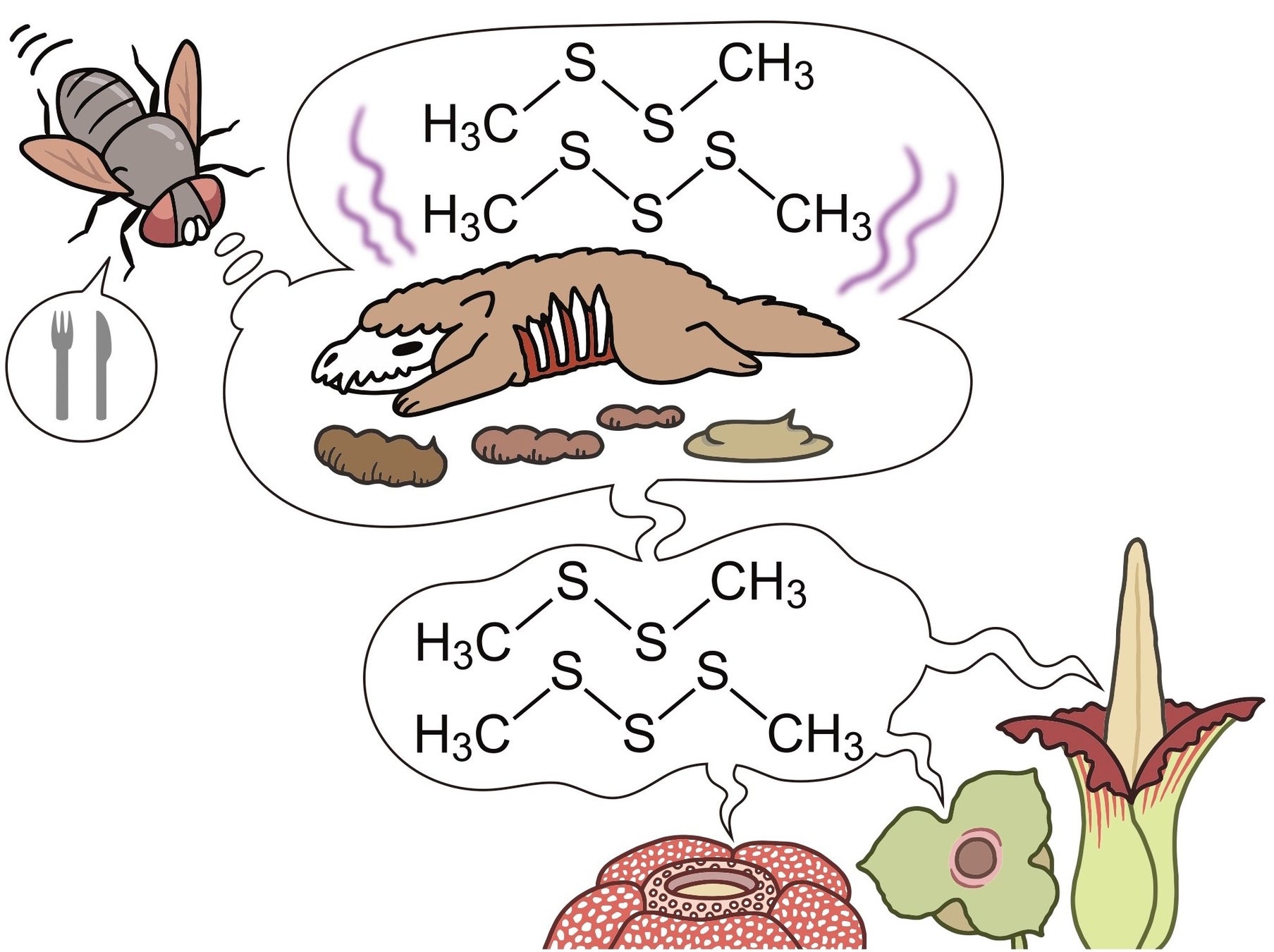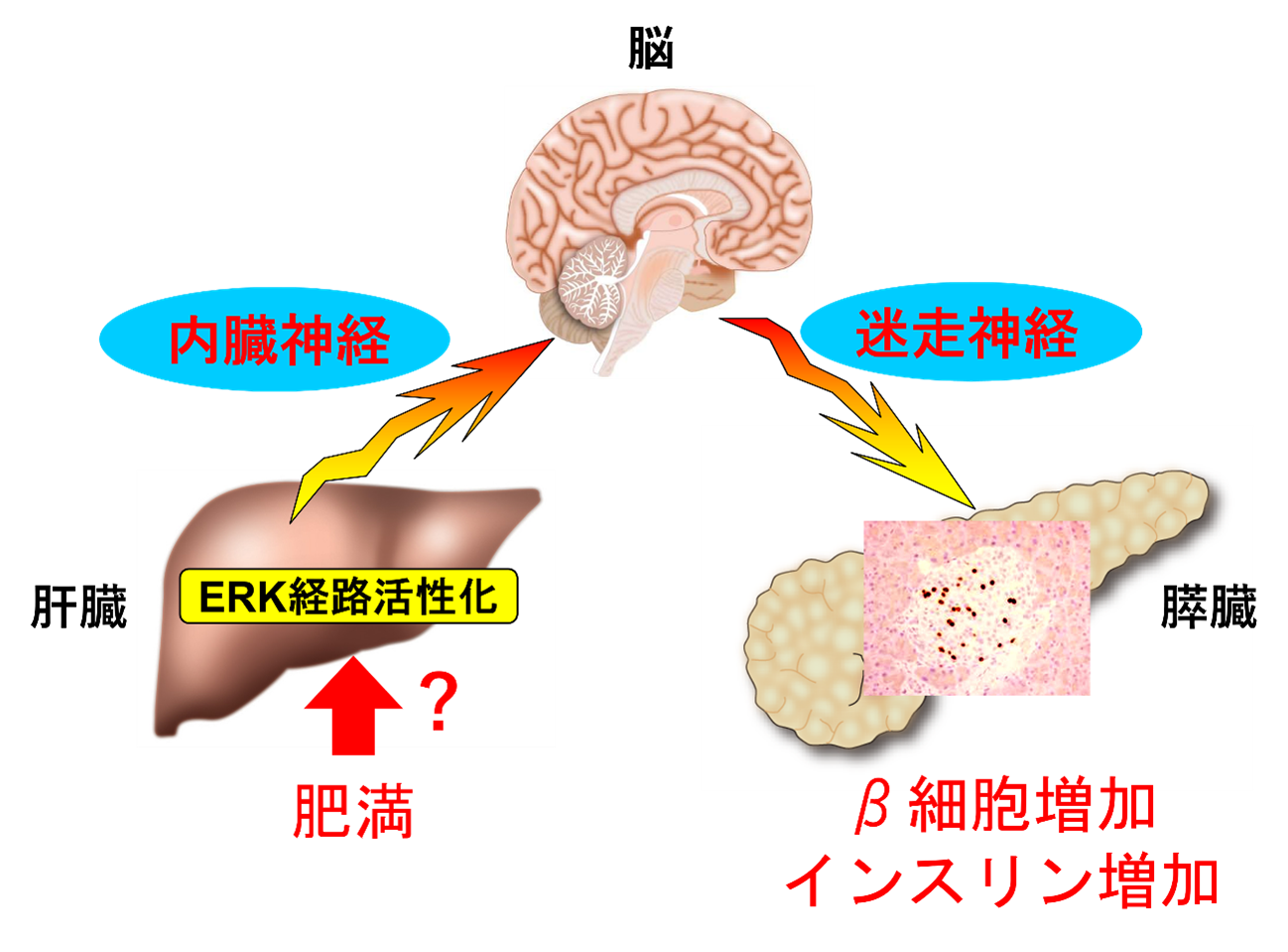2025-05-09 国立科学博物館,科学技術振興機構,東京大学,国立遺伝学研究所,昭和医科大学,宮崎大学
東北大学,ライフサイエンス統合データベースセンター,慶應義塾大学
 図1:腐肉擬態花の模式図。花からは腐った肉や肉食動物の糞から出るのと同じジメチルジスルフィド、ジメチルトリスルフィドといったにおい成分を放ち、花粉を運ぶハエなどの昆虫を誘き寄せる。
図1:腐肉擬態花の模式図。花からは腐った肉や肉食動物の糞から出るのと同じジメチルジスルフィド、ジメチルトリスルフィドといったにおい成分を放ち、花粉を運ぶハエなどの昆虫を誘き寄せる。
<関連情報>
- https://www.jst.go.jp/pr/announce/20250509-2/index.html
- https://www.jst.go.jp/pr/announce/20250509-2/pdf/20250509-2.pdf
- https://www.science.org/doi/10.1126/science.adu8988
悪臭を放つ花におけるジスルフィド形成酵素の収斂的獲得 Convergent acquisition of disulfide-forming enzymes in malodorous flowers
Yudai Okuyama, Kenji Fukushima, Satoshi Kakishima, Anna K. Valchanova, […] , and Atsushi J. Nagano
Science Published:8 May 2025
DOI:https://doi.org/10.1126/science.adu8988
Editor’s summary
There are many ways for plants to attract pollinators, and some flowers are specialized to mimic the smell of rotting meat. Okuyama et al. identified the disulfide synthase enzymes responsible for producing volatile oligosulfides in three plant genera, including Asarum species (see the Perspective by Caputi and O’Connor). By examining enzymatic functions and reconstructing ancestral genetic sequences, the authors found that disulfide synthases probably evolved from a methanethiol oxidase gene that is widely conserved across prokaryotes and eukaryotes. Disulfide synthases were independently co-opted for oligosulfide production in each floral lineage, and this process could be achieved with just two or three amino acid substitutions. The work provides insight into the convergent evolution of new traits in the context of floral mimicry. —Madeleine Seale
Abstract
Identifying the metabolic and genetic changes that confer evolutionary novelty is essential for understanding the factors facilitating or constraining the occurrence of traits. We show that dimethyl disulfide (DMDS), a volatile compound that attracts saprophilous pollinators, is produced by a disulfide synthase (DSS) in the plant genus Asarum (Aristolochiaceae). DSS is derived from methanethiol oxidase (MTOX), an enzyme conserved among animals and plants, and similar DSS enzymes have independently evolved in two other plant genera. Three amino acid changes shared among the DSSs of independent origins were sufficient to cause a functional switch between MTOX and DSS. The small number of amino acid changes and the co-option of a highly conserved enzyme may explain why DMDS-emitting flowers are widespread among floral mimics.


